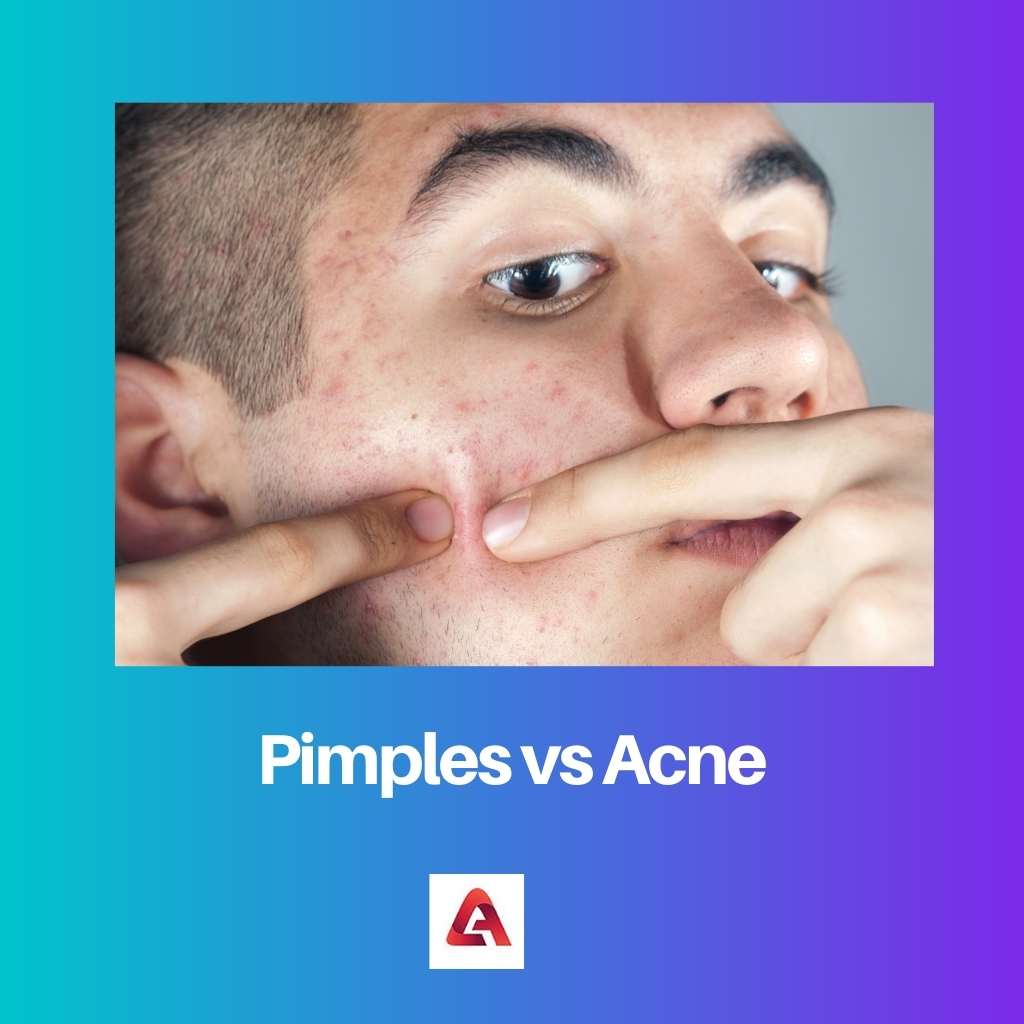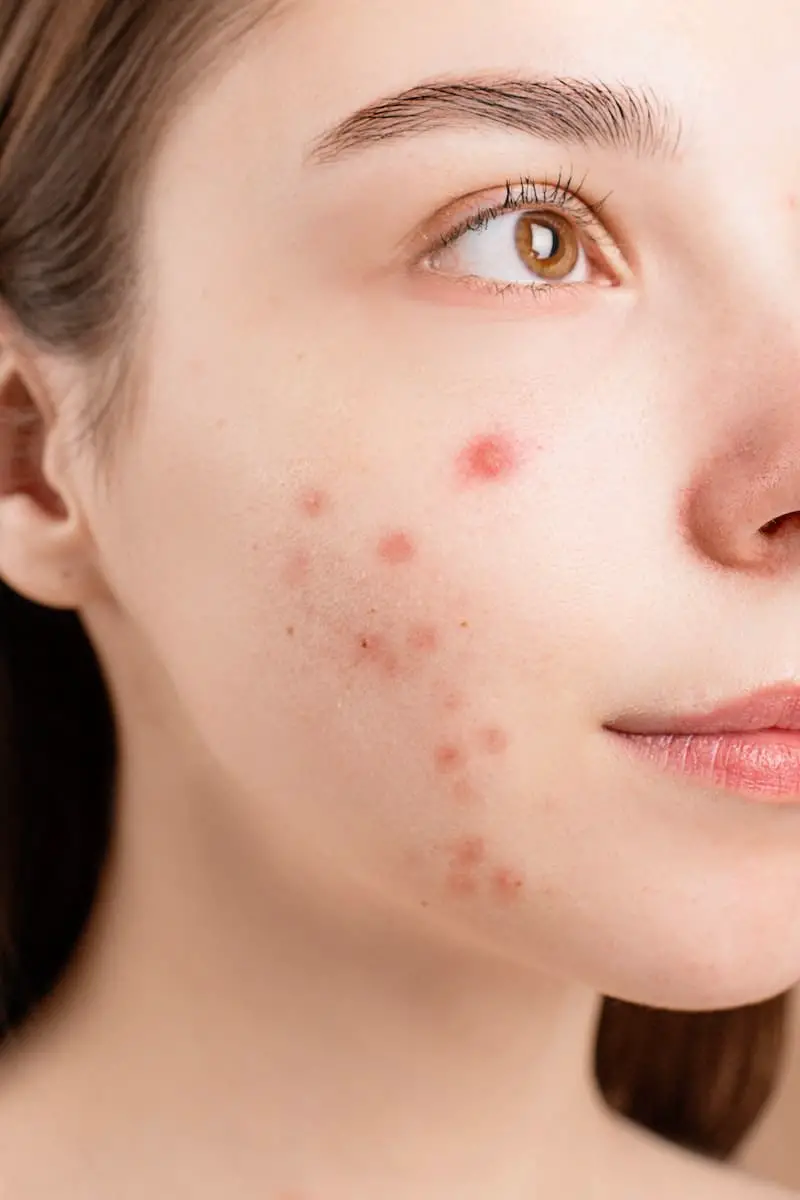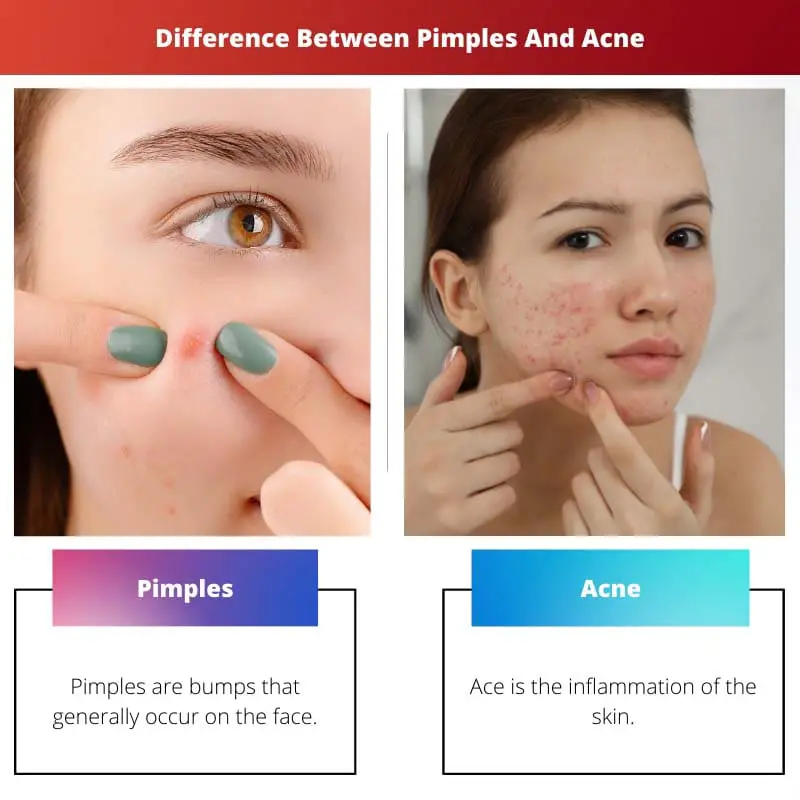Pimples and Acne are skin conditions that mainly occur on the face and are commonly seen in teenagers. Since teenagers grow, they have a hormonal imbalance due to which pimples or acne occur.
They are related to the skin problems that every human being faces in their life. Both terms are confused many times because they are co-related. However, there are some key differences.
Key Takeaways
- Pimples are single, isolated, inflamed spots on the skin; acne is a chronic skin condition characterized by numerous breakouts.
- Pimples occur when pores become clogged with oil, dead skin cells, or bacteria; acne involves hormonal imbalances and inflammation.
- Treating pimples requires spot treatments and proper hygiene; managing acne involves a comprehensive skincare routine and possibly medical intervention.
Pimples vs Acne
Pimples are small, localized spots that appear on the skin’s surface. Clogged pores, excess oil production, and bacteria on the skin cause them. Acne is a more severe skin condition involving multiple blemishes, including blackheads, whiteheads, and cysts.

Pimples are not a disease; they are a symptom of acne. Pimples are the skin’s way to eliminate excess oil and bacteria. They are caused because of hormonal changes.
They are red and painful and can leave scars behind. Dermatologists’ recommended creams can treat pimples.
Acne is an inflammatory skin condition that many different factors, including bacteria can cause. Acne is caused by a blocked skin pore, which can be clogged with sebum.
This causes swelling, redness, and sometimes, pus. This is a chronic condition that can affect both teens and adults.
Comparison Table
| Parameters of Comparison | Pimples | Acne |
|---|---|---|
| What are they? | Pimples are bumps that occur on the face. | Ace is the inflammation of the skin. |
| Causes | Excessive oil consumption or environmental factors. | Home remedies or creams. |
| Symptoms | Pus-filled bumps. | Pimples, blackheads, whiteheads, etc. |
| Treatment | Home-remedies or creams. | Creams, Cleansers, anti-biotics. |
| Occurs | Pimples can occur to anyone of any age. | Acne more commonly occurs in teenagers. |
What are Pimples?
A pimple is a reddened, inflamed area on the skin. Spots form when the skin’s oil glands become too active and clog pores.
The pus from a pimple can then enter the pore and inflame it. Acne can occur anywhere on the body but develops on the face.
The conventional treatments include salicylic acid, niacinamide, and benzyl peroxide. Some people may experience allergic reactions to these treatments, and many may be highly irritating to the skin.
Pimples can be caused by diet and nutritional factors. Some researchers suggest that oily foods also cause spots. However, some people claim that certain foods can trigger them.
Some experts suggest that oily and junk cause pimples because they increase fat in the body. While some people believe that eating oily is the leading cause, others claim that consuming foods high in vitamins A, D, and E can help reduce the likelihood of a pimple.
You can find some nutrients in chocolate, milk, sugar, and other foods. These vitamins are essential for healthy skin.
If your skin isn’t getting enough, it can cause dryness and more sebum formation. There are many effective ways to get rid of pimples.
Though you shouldn’t pinch the pimples, or they will leave a scar on your skin.

What is Acne?
Acne is due to hormonal changes in the body. This skin condition affects more than half of the population. Various types of medications and acne treatments are available, each designed to target other aspects of the problem.
These medicines can be applied to the skin or taken in pill form. A healthcare provider must prescribe certain medicines. Sometimes, combining two or more drugs to address the problem is possible.
Some of the more commonly used treatments for acne include topical tazarotene, azelaic acid, salicylic acid, and dapsone. Acne refers to a disorder in the sebaceous and hair follicles of the skin.
These glands secrete oil to keep the skin moisturized and healthy.
When these glands become clogged, they produce oil, accumulating and forming pimples and even cysts. Acne can happen to anyone at any age, but it is most common during puberty or hormonal changes that affect both girls and boys.
Acne appears in clusters of blackheads, whiteheads, and clogged pores. The area surrounding these spots may become red or painful, and it may become scarred over time.
In severe cases, acne can cause joint pain, fever, fatigue, and generalized joint pain. Also, in many cases, due to hormonal changes, acne can lead to depression, social isolation, anxiety, and even psychological problems.

Main Differences Between Pimples And Acne
- Pimples are inflammation of the skin that can occur to anyone. Acne is more common in teenagers.
- Pimples are a symptom of acne. Acne is a skin condition.
- Pimples are pus-filled bumps. They are different from blackheads or whiteheads, which are also symptoms of acne.
- Pimples are not genetic. Acne can be genetic.
- Pimples are caused due to a blockage in the skin pore. Acne occurs due to excessive oil consumption, hormonal changes, or environmental factors.




